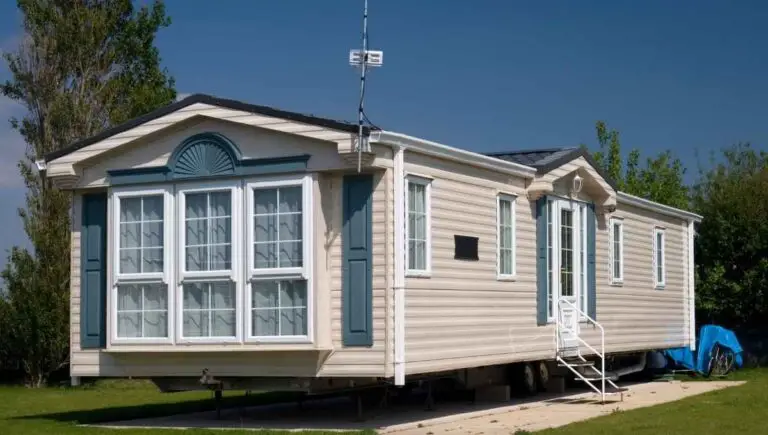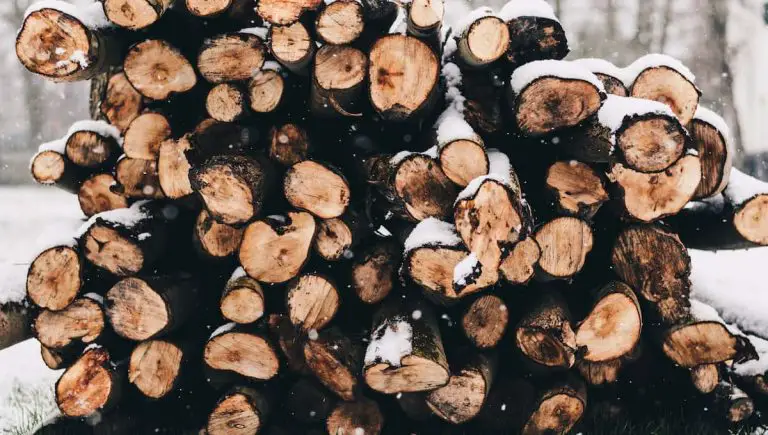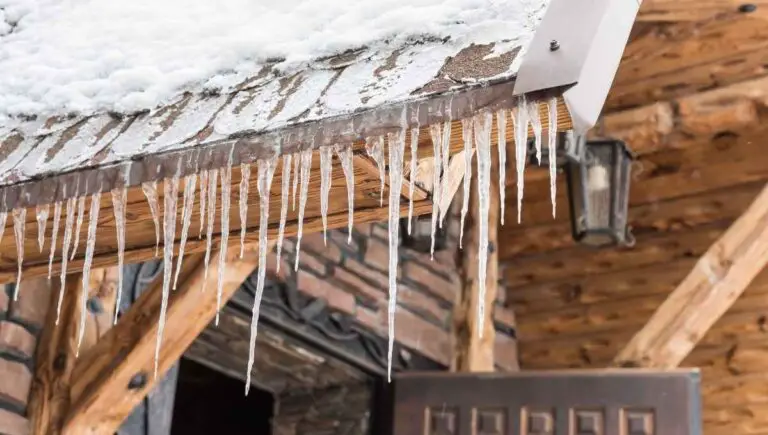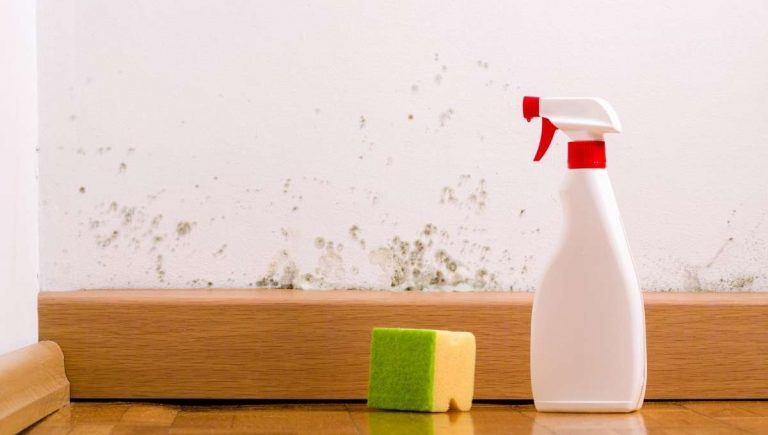My Weed Eater Won’t Stay Running (Reasons & Easy Fixes)

Having a weed eater that won’t stay running can really put a damper on your maintenance day, especially when you have no idea why this is happening. So, why does your weed eater not stay running?
The most common reasons a weed eater will not stay running are a clog in either a filter or carburetor or an issue with the power or fuel source. The clog can become so extreme that it doesn’t allow any airflow to circulate, so the weed eater will not turn on.
There are many other reasons a weed eater will not stay running, and many easy fixes exist. In this article, we will go over all the common reasons for a faulty weed eater and easy ways to fix them. Let’s get started!
This post contains affiliate links from Amazon and other stores. This means Yard Blogger may earn a commission if you make a purchase using any of our links. Please refer to our full affiliate disclosure policy for full details.
Here’s a Quick Pro Tip!
There are easy fixes for certain weed eater problems, but sometimes you just need a new weed eater. There are a lot of good options out there to meet your specific needs.
Here are our three picks for the next time you decide you need a new weed eater:
1. Worx Cordless String Trimmer & Edger: This is a strong weed eater and is battery-powered. It comes with two rechargeable batteries to weed-eat for longer. It also transforms from a trimmer to an edger.
2. PowerSmart String Trimmer & Edger: This trimmer is lightweight but powerful. It is a two-cycle engine and allows 14 inches of cutting string for more cutting at a time.
3. Greenworks Corded Electric String Trimmer: This trimmer is lightweight at 7.05 pounds. It comes with an edging wheel and pivoting head for edging and trimming. It cuts a 15-inch path for faster cutting and has a fast start-up. It is ideal for small to medium size yards.
Broken Weed Eaters
In this section, we will go over broad issues that occur with weed eaters when they either won’t stay running or won’t even start. We will also go over some tips and tricks that often fix some common issues in a weed eater.
How Do You Fix a Weed Eater That Won’t Stay Running?
Most likely, your weed eater will not stay running because of a faulty power source or bad fuel. If your weed eater runs on gas, ask yourself if the gas is old. It could also be that you only used gas, and your engine needs a mix of gas and oil.
If your weed eater is battery-powered, check the life of your battery. And if your weed eater is an electric engine, check the outlet it’s running on and the power cord. If the power cord is damaged or not fit for heavy-duty work, you will need to replace it before it overheats.
Why Does My Weed Eater Keep Stopping?
Your weed eater might keep stopping if it has a clog in a filter or carburetor. To fix a filter clog, simply replace the filter. You will find in the user manual where the filters are and which filters you need. You can also check the carburetor by taking it out and cleaning it.
When you clean out a carburetor, you can use a cleaner made specifically for the carburetor. You will need to go by the user manual to know where and how to take out the carburetor for the specific model of your weed eater.
Weed Eaters Won’t Start After Running?
If your weed eater doesn’t start after it has been running, it could be because old fuel has moved its way through the filter and clogged it up bad enough the weed eater will not start up again. To fix this, add a fuel stabilizer to clean your fuel and change the filter.
A fuel stabilizer will keep the gas in your weed eater fresh for a year or more. If your engine is a two-cycle engine, you can buy mixed gas with a stabilizer or add oil and stabilizer to your fuel.
To change your filter, look to see the size of the old filter before buying a replacement.
Why is My Weed Eater Not Starting?
Check your power or fuel source if your weed eater is not starting. For example, if you have an electric weed eater, analyze the power cord to ensure it’s not overheating or damaged. If you have a battery weed eater, check your battery.
If you have a gas-powered weed eater, the gas may not be good anymore. This can happen if the weed eater has been left unused for more than three months and the gas was not stabilized.
Simply remove the old gas with a turkey baster, put in fresh fuel, and give it a crank.
Weed eaters Won’t Start When Hot?
If your weed eater works fine when it’s cold but once hot, it will not start up again – it could be your carburetor or ignition model. But before you replace anything, check the bulb and fuel line to see if there are any holes, and make sure the gas cap fits.
A weed eater may not start back when it is hot because the fuel is old or a filter needs to be changed. You can also clean out the carburetor. Additionally, the spark plug may have been disconnected.
Not Running
In this section, we will get a little more specific and discuss what to expect from your weed eater and signs to look for if it’s not running properly. Also, we will go over ways to help your weed eater work better and more efficiently.
How Can I Make My Weed Eater Run Better?
Your weed eater can run better by changing the trimmer line to a thicker string. Also, staying on top of the maintenance will help. One way to maintain it is to change the fuel after three months or add a fuel stabilizer and change it every year.
Another way to maintain the weed eater is to check the fuel cap and ensure it fits well. Also, check the fuel and bulb line to see if there are any holes, and check the filters to clear up any clogs. The carburetor needs cleaning periodically too.
How Long Should You Run a Weed Eater?
Each weed eater model will hold up so long before overheating. Most weed eaters should work for hours at a time, but if you notice it overheating, turn it off and let it cool off for thirty minutes before starting it again.
Make sure you lay the hot weed eater on concrete or another non-flammable surface. If you lay it on dry grass, it could catch fire. Also, make sure you are using fresh fuel and your filters are clean. This will help your weed eater and the prevention of fires.
How Long Can You Run a Weed Eater?
You can run a weed eater for as long as it does not overheat. However, if you have a battery-powered weed eater, you are also limited to battery life. You will start to notice a decline in performance when the battery is dying or it’s starting to overheat.
If you have an electric weed eater, you are probably not weeding too much because it will only stretch so far.
However, it is also important to check the power cord the first few times you weed eat and see if it ever gets hot.
Why Won’t My Gas Weed Wacker Start?
Your gas weed eater may not start because the fuel filter or carburetor is clogged. You can change the filter and clean out the carburetor. If this does not work, change the fuel and check the fuel line for holes.
Keeping your gas-powered weed eater maintained will prevent faulty start-ups. You can change the fuel every three months or once every year if you add a fuel stabilizer, and you can check the filters every year.
My Battery-Operated Weed Eater Stopped Working?
If your battery-operated weed eater stops working, turn the weed eater off and look under the shield. If you see any clogged-up grass and debris, remove it and start weed-eating again.
Cleaning debris from the weed eater may seem like a continual job. If that’s the case, you probably have a large gap between the shaft of the trimmer and the cutting head.
Before buying another weed eater, check to see if there’s a large gap.
You might also enjoy our post on What to Do if Your Weed Eater String Keeps Breaking
Choke Concerns
The choke controls airflow to the carburetor, so when something is wrong with the choke, something is wrong with the carburetor. In this section, we discuss the causes and fixes for choke and carburetor malfunction.
Why Does My Weed Eater Only Run on Choke?
If you are only running your weed eater on choke, there’s something wrong with the carburetor. However, it could also be a clog in a filter, or it’s due to bad fuel. Also, it could be a faulty gas cap and vent.
To remedy this, you can do a few things before replacing parts. For example, you can change the filter, clean the carburetor, replace the gas cap, change the fuel, check for any holes in the fuel line, and clear out any debris from the gap of the trimmer.
Weed Eaters Won’t Stay Running Without Using the Choke?
A weed eaters’ choke is useful and controls the amount of air that goes through the carburetor, but if the engine does not run at all without using it, it could be due to a dirty and clogged carburetor.
You will also want to change the fuel. Most weed eaters are two-cycle engines and need mixed fuel. This is because the mixed fuel will contain oil, fuel, and probably fuel stabilizer.
In addition, the stabilizer will keep the fuel fresh for another year without needing to be changed.
How Many Times Do You Prime a Weed Eater?
You can press a weed eater prime bulb five to six times. This will pump fresh gas through the carburetor. If you pump too much gas into the carburetor, you can still use the weed eater immediately, but clean up the drained fuel first.
If you don’t know if the primer bulb is working, press the primer bulb ten times and then start the engine. If the primer bulb hasn’t been used in a while, it may be dry, no longer containing gas, and will need a few extra pushes.
You might also enjoy our post on If Your Weed Eater Needs Oil
How Do You Test a Weed Eater?
After you have checked the filters, carburetor, gap around the trimmer, gas, and fuel lines, you can test the compression. You can use a compression tester for this. It will tell you if the pressure is too high.
The ideal pressure is 60 pounds for most weed eaters. However, a two-cycle engine should have 90 to 110 pounds.
If it’s too low, the mower will not work because it will not have enough power to turn the engine.
How to Start a Weed Eater That Has Been Sitting?
If you did not use stabilized gas and the gas is more than three months old, you will need to change the gas. You will also need to press the primer ten times to get fresh fuel into the carburetor. Be sure to change the gas first.
If it’s been a while since you’ve used your weed eater, this is a good time to change or clean filters, clean the carburetor, and check the fuel lines for holes. Also, check the spring if your start-up is good, but the line is giving you issues.
Fixes
In this section, we look at how to fix some specific but common issues with weed eaters. We will go over if you can flood a weed eater, issues with spark plugs, and what happens when a trimmer just dies.
Can You Flood a Weed Eater?
Your weed eater can flood when you give the carburetor more gas to get it started, but it’s already warm. If this happens, it’s an easy fix. Simply turn the engine off, and set the choker to off.
The spark plug will also be flooded. To remedy this, while the weed eater is off and has cooled, disconnect the boot from the spark plug and clean up the fuel on the spark plug and boot. Then reconnect the two.
To find the spark plug, look for a thick black wire connected to something in the shape of a boot. It will be located on the exterior of the weed eater, and the boot will cover the spark plug.
You might also enjoy our post on If a Weed Eater Can Cut Off Your Finger
How Do You Check a Spark on a Weed Eater?
To test a spark plug, you will need a spark plug tester. To use a tester, wait until the engine is cool and disconnect the boot from the spark plug. Then, connect the tester to the spark plug and boot according to the manufacturer’s directions.
If the tester lights up when you crank the mower, you’ll know that the spark plug works. Some spark plug testers come with a new boot because the old boot may be the issue if the spark plug is not working.
How Do You Clean a Weed Eater Spark Plug?
To clean off a spark plug, ensure the engine is cool. Then try a towel and some elbow grease. If that doesn’t work, remove the spark plug from the machine and use an abrasive cleaner and a sander or wire brush to scrub it clean.
A wire brush takes a little more energy to scrub the spark plug clean, but it takes about the same amount of time as a sander and is just as effective for most jobs.
However, there are sanders that are made specifically for cleaning spark plugs and making the job easier and faster.
How Long Do Spark Plugs Last in a Weed Eater?
Generally speaking, spark plugs last around 100 hours of use. If you know you’ve used your spark plug for 100 hours or more, it’s suggested you replace it. Try cleaning it if it doesn’t seem to be working before that time.
To clean a spark plug, ensure the weed eater’s motor is off and cool. Then remove the spark plug and remove any residue with an abrasive cleaner and a wire brush or a sander made for spark plugs.
Trimmer Starts Then Dies?
When a trimmer starts and then dies, it is usually a sign of a clog in the carburetor, air filter, fuel filter, or spark arrestor. Clogs can happen over time or when old gas is left in the tank. Use fresh or stabilized gas to prevent frequent clogging.
To clean a carburetor, you can buy a carburetor kit; if that doesn’t work, you can replace some parts or the whole carburetor.
If the air or fuel filter becomes clogged, it is best to replace them, but if the spark arrestor is clogged, you may be able to clean it with a wire brush.
You might also enjoy our post on Can a Weed Eater Get Wet?
Related Questions
How Do You Start a Weed Eater?
To start a gas-powered weed eater, first, hold down the throttle trigger and move the switch into the start position. Then put the choke in the off-cold position. Next, press the fuel bulb four to six times to release fuel into the carburetor, and crank the engine up to five times.
If the engine does not start in five cranks, do not crank it again because it might flood the engine. Instead, turn the choke in the open position and then crank the engine.
For a battery and electric weed eater, simply push the trigger to start and let go to stop.
Do Weed Eaters Have Fuel Filters?
Gas weed eaters have fuel filters that clean the fuel of impurities, rust, sediment, and other contaminants. Unfortunately, the fuel filter becomes clogged over time and will need to be replaced periodically depending on the frequency of use.
If you notice your fuel filter needs to be replaced frequently, try changing your fuel to a stabilized fuel. If you have a two-cycle weed eater, you can buy mixed gas with a stabilizer mixed with it as well.
Which is Better, a Two-Cycle or a Four-Cycle Weed Eater?
Two-cycle weed eaters are more powerful, but four-cycle weed eaters are more durable. The reason is that two-cycle weed eaters run at a higher RPM and therefore wear out faster. But a two-cycle weed eater will likely need less maintenance.
There are also good alternatives to gas-powered weed eaters. Battery and electric weed eaters are made with nearly the same amount of power and are simpler to use and maintain.
The main drawback is you are limited to battery life on a battery-powered one or the length of the extension cord on an electric one.
However, some battery-powered motors come with two rechargeable batteries for long-lasting use.
Final Thoughts
We hope this article helped you figure things out with your weed eater. It may be time for a new weed eater if you’re still frustrated with it.
They make great battery-powered and electric weed eaters that are also very powerful and less complicated.










